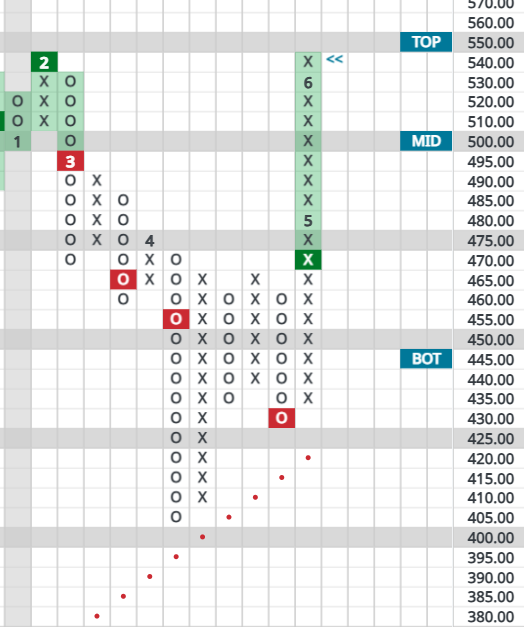When the markets are piping hot, much like they were for the second half of 2020, investing feels like such an easy endeavor. When the markets cool to levels where growth is hard to find, investing seems much more bleak – and 2022 surely felt like a barren, frozen tundra when it comes to finding positive returns.
Years where investing feels easy (2020), because everything is going up, skews the decision-making process, seemingly rewarding investors for investments that might otherwise seem laughable (i.e. GameStop (GME)). Conversely, years where investing feels difficult (2022), because such a wide breadth of investment options have declined in value, seem to paralyze investors on figuring out how they could possibly invest in this environment.
This mental occurrence is referred to as recency bias: a predisposed mindset causing us to believe what’s happened most recently is how things will continue to happen.
Retrospect vision would be a superpower if we could only access it BEFORE the decision we needed to make. It comes with so much clarity that, if we had even a fraction of it before the decision-making process came to a critical point, we would never make decisions that would come off as irrational or illogical.
What we are left with, however, is something short of complete clarity. A viewpoint on life resulting from the individual life we’ve each lived. A narrative created from our own unique experience. And our own narrative is far different from that of others, even if given the same environment or data or genetics. This narrative is the foundation from which we make our decisions, and it’s easy to forget that the very foundation we create can be riddled with assumptions and estimations, each being just as easily wrong as they could be right.
The experiences that we’ve had and the stories we tell ourselves about how the world works to cement biases (mental shortcuts) in our decision-making and thought processes – such as expediency bias (rushing judgment), experience bias (judgments only based on your own unique reality and upbringing), distance bias (putting increased value on things closer to you) and recency bias (putting more weight in recent occurrences).
News of a strange virus spreading rapidly throughout the globe in late 2019 / early 2020 did not have many investors running for the hills. The market saw a dramatic decline in March of 2020 as a result of COVID lockdowns globally, though by June 2020, the market would begin its climb towards the 16.26% positive return (S&P 500) that it saw by year’s end.
2021 saw investors trying to ride the wave that came with the perceived sky-high growth of 2020, and that is exactly what many did. The S&P 500 closed the year with a positive 26.89% return.
2022 turned out to be a far different story, with inflation, boiled-over tension between Ukraine and Russia, and continued persistence of COVID. Most investors (not limited to those just investing in the stock market) saw their investments decline in value. If you knew the stock markets would see such a tough year right from the get-go (the market peaked on January 4th, 2022), your superpower might have helped you dodge significant losses (the S&P 500 finished the year down 19.44%).
None of us are that good, unfortunately, because our brains don’t operate that way. We don’t sensibly process risk versus reward, and us humans aren’t very good at recognizing that what happened in the past does not guarantee what will happen in the future. 2022 is a prime example of this, as there had only been three (3) previous occurrences of both stocks and bonds having negative returns in the same year (1931, 1941, and 1969), and 2022 was the FIRST TIME both stocks and bonds were down double-digits in the same year:
- US stock market -19.44%
- Aggregate US bond market -13%
Ironically, the most frequently used disclosure in finance reminds of the reality of things: past performance does not guarantee future performance. If you flip a coin 10 times and it lands heads-up every time, it does not mean that tails is “due” to land face-up next time, because the last 10 flips have absolutely nothing to do with the next flip of that coin.
Well, if we don’t get the superpower of retrospective vision, and what’s happened in the past doesn’t guarantee what will happen in the future, what do you do as it relates to investing your dollars (to beat inflation, to save for retirement, to build generational wealth)?
The answer is to simply have a plan and to take action. Have a plan for your short-term needs, but also have a plan on what you will do with anything above what you need for money in the short term. If 2022 has shown us anything, it’s that inflation is something that can seriously deteriorate your spending power. The perfect plan would be ideal right now – one that eliminates all risk, and maximizes the rewards, though that’s the juxtaposition: you can’t earn a reward without taking on risk.
It’s equally important to take action in protecting your hard-earned dollars. The old adage in the investment industry is “time IN the market is more important that TIMING the market,” meaning you don’t have to time it perfectly, because how long your dollars are invested is a far more important consideration.
Be it with CDs at your bank, or investing in stocks via the New York Stock Exchange, your money has to be working for you. Develop a plan, and execute.
If not now, then when?


